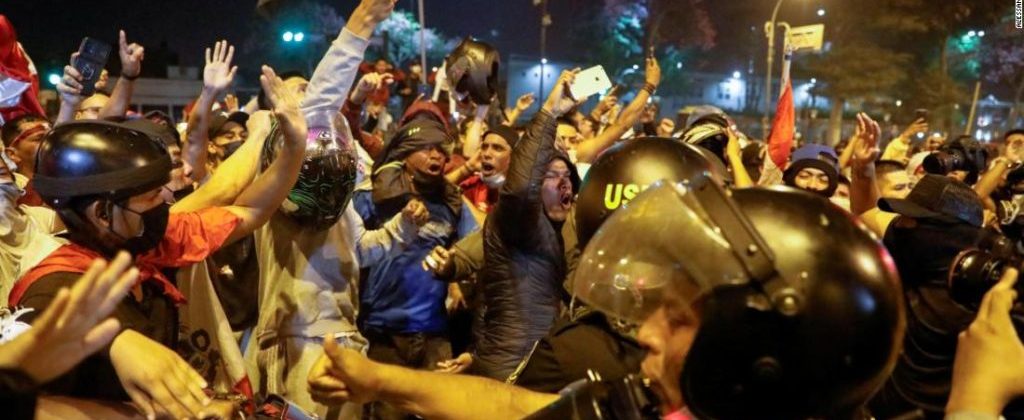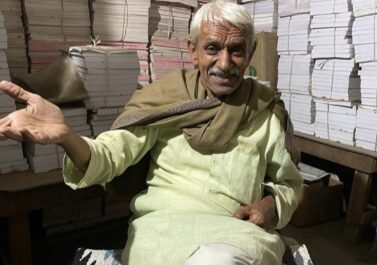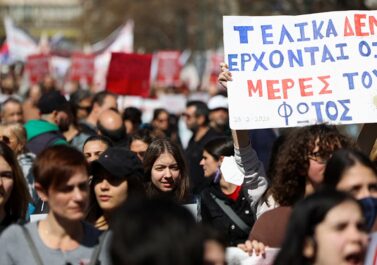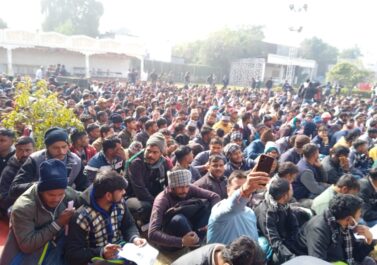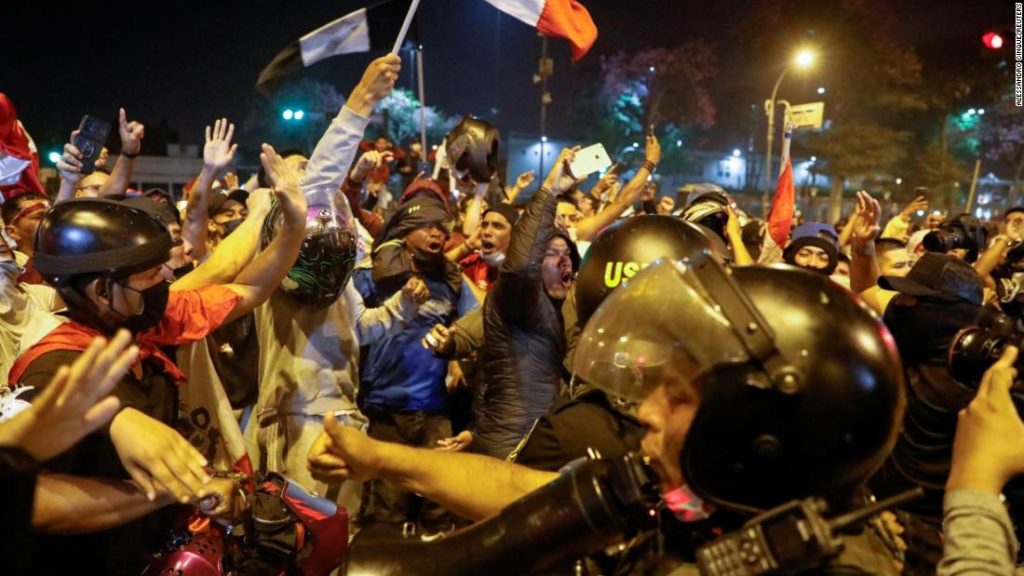
We translated and edited an article on the recent protests in Peru, published by Editorial Ande on the 6th of February 2023. We need more detailed accounts from the ground to get a better picture of what is happening…
-Dad, do policemen eat human flesh
-So why do they kill people like that?
Drums for Rancas – Manuel Scorza
—–
International context
The present moment is characterised by the intensification of the class struggle worldwide. This struggle is exacerbated in direct proportion to the worsening of the crisis of capitalism and the worsening of the misery of the working class. […] High rates of inflation are unfolding, mainly in the food and housing sectors, aspects that hit the working class the hardest. On the other hand, the inter-imperialist war imminent to the crisis leads to an increase in oil and gas prices, generating a domino effect on the prices of all products worldwide. All this has a direct consequence of raising the cost of living for the working class. Although we see some improvements in certain sectors and a minimal reduction in inflation in some countries, it is expected that in the coming months, the general economic slowdown will worsen and one-third of the world economy will go into recession […]
The crisis in Peru
Peru is a country that depends on imports of fuels, fertilisers and foodstuffs; on the other hand, its primary export economy makes it sensitive to external economic shocks. Thus, all these price increases are directly affecting the living costs of the population (for example, as the cost of transport rises, all goods transported increase in price). The lack of fertilisers leads to lower production and the high cost of fertilisers increases the price of agricultural products. At the same time, Peru’s currency has been devalued by, among other factors, the increase in inflation and the rise in interest rates by the US Federal Reserve. These effects have been felt most acutely in recent months. To this we can add that the impact of the war has had the opposite effect to that expected, reducing the price of minerals. All this has generated an increase in inflation of more than 2 points, reaching the highest level in 26 years with 8.46% and more than 15% on foodstuffs. This means that products as basic for the consumption of the working class as potatoes, for example, have increased in price by more than 100%. The quarterly growth of GDP in 2022 has been decreasing with a drop from 3.8% to 1.7% in the last quarter.
Peruvian capitalism has to compensate for low productivity of its capital in global competition with a redoubled exploitation of the domestic labour force. This is made possible by the structural persistence of an army of unemployed and semi-proletarianised peasants, who regularly participate in the ‘informal’ economies, small-scale agricultural production and illegal economies with the primary aim of reproducing their existence. It is this process that – broadly speaking – explains the explosiveness of the class struggle.
Peruvian workers are subjected to the capitalist yoke, either because it is impossible for them to sell their labour power or, if they do, because they are subjected to greater degrees of exploitation, which is expressed in working hours that in some cases, such as in agro-industry, exceed 15 hours a day. Workers in the most troubled regions, such as Apurímac, have a monthly income of 714 Soles (189 US Dollars) or in Puno an average income of 805 Soles (213 US Dollars), although it is likely that incomes are even lower than this. In the southern highland regions of Peru, the high rate of anaemia in children is also notable, with an incidence of around 50% in Apurimac and Ayacucho and 70% in Puno.
Another characteristic feature of the economic, social and health problems in these poor regions is the operation of a strong racism that is intrinsic to the structural violence of capitalism in Peru. What we have experienced in the last month in Peru is the transition from the struggles between two fractions representing the national bourgeoisie to a scenario of class struggle where the working class confronts the representatives of the bourgeoisie in the state and has even gone as far as a direct attack on bourgeois property. In this sense, we maintain that 1) the political crisis in Peru is an expression of the world crisis of capital; 2) that the development of the current struggles has implied a transition from inter-bourgeois disputes within the state to an incipient manifestation of class struggle (labour against capital), due to the direct intervention of the workers against representatives of the bourgeois class in the state and, in some cases, directly against the means of production of the bourgeoisie; 3) that brutal repression is inherent of the class character of the Peruvian capitalist state, regardless of who serves in the role of its political personnel, and 4) that the conditions and intensity of the escalation of police and military violence allow us to refer to a counter-insurgency state, whose character we will make explicit later on.
Let us review the most relevant events in this process of struggle that is still unfolding as we speak. On the 12th of December, six deaths were reported during protests in Apurímac and one in Arequipa. The 13th of December was significant because a large part of the workers went from attacking local and national government institutions to attacking bourgeois property itself. On the 15th of December, 10 people were killed in the Ayacucho region. By the 16th there were 3 dead in Junín, 3 in La Libertad and another 3 in Cusco. The struggles continued but slowed down during the new year holidays. After these dates, the mobilisations soon resumed, with the autonomously organised workers once again taking the lead, especially those in Puno, Ica and Cusco. Immediately after Christmas, the struggles began to be felt again in the southern regions of Peru. On the 4th of January, the main regions in southern Peru began an indefinite strike.
The development of mobilisations against the government received a brutal response from the repressive forces of the capitalist state. On the 9th of January, when some contingents of workers in the city of Juliaca moved to the vicinity of the Inca Manco Capac airport, the police began their repressive actions, shooting directly at the bodies of the demonstrators. According to the medical personnel who attended to the wounded and inspected those killed, the projectiles used by the police were not just common buckshot but military grade ammunition, specifically expansive bullets known as ‘dum dum’. This type of ammunition has the particularity of expanding in the body after impact, causing damage to internal organs. In addition, tear gas bombs and rubber bullets were fired from helicopters. Thus, the more than 17 dead that have been registered up to now, and the numerous wounded, were victims of the disproportionate aggression that, without a doubt, took place under the complacency of the bourgeois coalition that supports the infamous Dina Boluarte. Among the fallen, it is worth mentioning a mother with an epileptic husband, unable to work because of his condition, who lost her 17-year-old son who was her only support for her livelihood. In addition, a doctor was treacherously killed while helping one of the wounded.
Criticism of the left of capital
The left of capital has displayed its emblematic analysis of the current class struggle by reducing everything to a question of identity or political autonomy. […] The different reformist organisations like the Movimiento por la Unidad Popular (MUP), Nuevo Perú, Convergencia Socialista, Partido Comunista Peruano, and Patria Roja have pointed out that, “the behaviour of Dina Boluarte [is] the concrete expression of trying to stop the ongoing process of democratisation generated from below (…) which is expressed in the struggle for respect for the popular will, equality of the vote and the rejection of the racist, class discrimination that is expressed in the disregard and contempt for the Peruvian”. A large part of these organisations trail behind the disgraced president Castillo and the bourgeois factions he represented. They end up appealing to the bourgeois mechanisms of domination to change the domination of the bourgeoisie. Good luck with that! Not only that, but they act as a “democratic mesh”, […] naming that which has neither project nor power to be, as ‘fascism’. Their aim: class conciliation.
The left of capital and its political operators in the social organisations and trade union centres have been characterised by a shameful silence in the face of the assassinations that took place on the 9th of January. The most paradigmatic case is that of the CGTP, led by the Stalinist PCP-UNIDAD. At first, not only did it contemplate meeting with Dina Boluarte, but, instead of mobilising its rank and file against the massacre perpetrated by her government, the trade union confined itself to calling for a “vigil against the repression in Juliaca”. At the same time, among the parties that are calling to maintain the mobilisation against Boluarte, there is an interest in channeling the proletarian revolt into a process aiming at constitutional changes only, which will mean nothing more than a rearrangement of the capitalist factions and the continuation of exploitation by other means.
[…] The current stage of the Peruvian state is that of counter-insurgency, where the prospect of channeling discontent into liberal institutions has been exhausted. In the current moment, the defence of the bourgeois state is carried out through the direct and premeditated annihilation of the mobilised population. It means that the leading strata of the bourgeoisie in power feels the imperious need to resort to methods of warfare that were institutionalised in Latin America with the direct training of US imperialism; the recourse to the radicalisation of violence in the face of the massive mobilisation of the working population responds to the capitalist contradictions that they themselves cannot control because of their subordinate character to the economic flows of global accumulation. Such a response from the working class aggravates the conditions of capitalist management and appropriation that sought to readjust after the dismissal of Pedro Castillo and the cornering of the bourgeois factions he represented. […]
ALL POWER TO THE WORKING CLASS!
